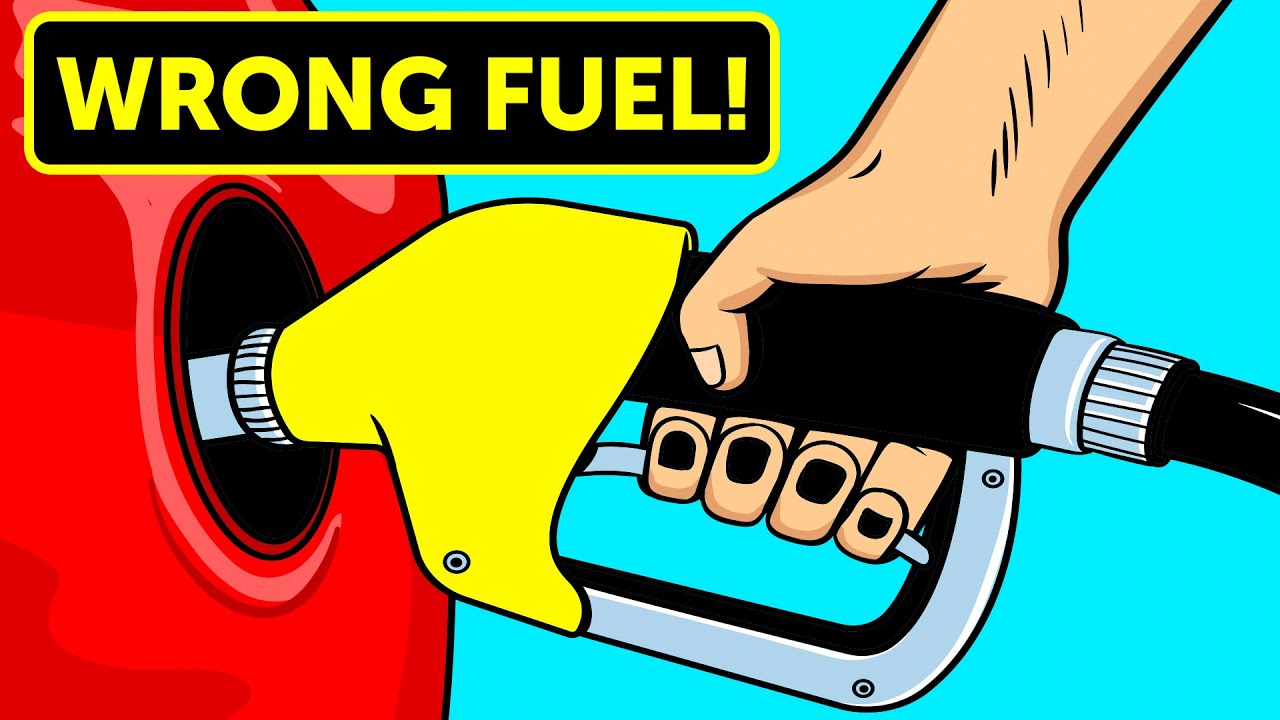That’s What Happens When You Put the Wrong Fuel in a Car
Picture this: you’re driving on a highway, and suddenly see something you’ve failed to notice earlier: your gas tank is almost empty! You drive to the closest gas station, only to find they have no other gas but 87. Should you pump it inside your car or not? What’s the difference between those numbers?
In fact, gasoline can actually be different, and it’s not one type fits all. In the US, the most typical numbers you’ll see are 87, 89, and 92. In other parts of the world, the numbers can vary, but most common ones are 91, 95, and 98. The higher the number value, the higher the cost of the fuel, so it might seem natural to choose the cheapest one and go with it, but it’s not as simple as it sounds.
Other videos you might like:
13 Car Tips That Will Save Your Trips https://www.youtube.com/watch?v=kEtlNKro7Bo&
How to Survive In a Sinking Car https://www.youtube.com/watch?v=WmrOWRx5xU8&
16 Driving Hacks from Experienced Drivers https://www.youtube.com/watch?v=s4EmIKePHuc
TIMESTAMPS:
What do these numbers mean? 0:24
If you have an older car, you’re lucky! 1:06
The “knocking” ? 2:36
Why higher octane fuel costs more 4:44
Ethanol fuel 5:12
The diesel engines! What’s wrong with these guys? 7:12
#cars #drivingtips #brightside
SUMMARY:
– It’s a surprising thing to say, but if you have an older car, you’re lucky. That’s because you generally don’t have to care about which type of gas to pump inside your vehicle.
– The 87 is a basic type of gas that fits most older cars. 89 is a midgrade octane rating that’s suitable for newer vehicles; and 92 is the premium gasoline that’s mostly required to drive elite and sports cars, but sometimes even new middle-segment automobiles can demand the 92 and nothing below that.
– Manufacturers may require a higher octane fuel because their engines receive more air thanks to supercharging or turbocharging.
– More air in the engine means faster ignition, and that can lead to early detonating of the mix. With high-octane fuel, this is usually out of the question, which can’t be said about the low-octane type.
– The damage caused by wrong fuel is not immediate, though. You’ll probably be able to drive for weeks before encountering any trouble.
– In the long run, the cost of repairing the engine will outweigh the fuel economy by far. In addition, the higher the octane rating, the “cleaner” the gas, so it will both help keep your car in a good condition and reduce your emissions.
– Some time ago, however, a new type of gas appeared on the market, and it has a separate label: E10 or E15. The letter E stands for ethanol, while the number indicates its percentage in the fuel — 10 or 15%, respectively.
– Ethanol is basically one of the most efficient additives in gasoline. It has a high octane rating by itself (about 109), it’s much safer for the environment, it’s renewable, and it reduces dependence on oil.
– What could happen if you accidentally pump diesel into your gas-powered car? At first, you’ll drive as if nothing’s wrong. That’s because the engine will use up the remains of gasoline in the tank. But as soon as those last few drops are expended, your car will just stop.
– If the opposite happens, however, and you fill your diesel tank with gasoline, things get much worse.
Music by Epidemic Sound https://www.epidemicsound.com/
Subscribe to Bright Side : https://goo.gl/rQTJZz
—————————————————————————————-
Our Social Media:
Facebook: https://www.facebook.com/brightside/
Instagram: https://www.instagram.com/brightgram/
5-Minute Crafts Youtube: https://www.goo.gl/8JVmuC
Stock materials (photos, footages and other):
https://www.depositphotos.com
https://www.shutterstock.com
https://www.eastnews.ru
—————————————————————————————-
For more videos and articles visit:
http://www.brightside.me/



![[ID: M1BPwIzWgLE] Youtube Automatic](https://okumasaati.net/wp-content/uploads/2020/10/id-m1bpwizwgle-youtube-automatic-360x203.jpg)
![[ID: 8Poklx9Ifz4] Youtube Automatic](https://okumasaati.net/wp-content/uploads/2021/05/id-8poklx9ifz4-youtube-automatic-360x203.jpg)
![[ID: O5nspyuj_vo] Youtube Automatic](https://okumasaati.net/wp-content/uploads/2020/10/id-o5nspyujvo-youtube-automatic-360x203.jpg)
![[ID: JwhouCNq-Fc] Youtube Automatic](https://okumasaati.net/wp-content/uploads/2020/10/id-jwhoucnq-fc-youtube-automatic-360x203.jpg)
![[ID: yhYU4ZbLmmk] Youtube Automatic](https://okumasaati.net/wp-content/uploads/2020/10/id-yhyu4zblmmk-youtube-automatic-360x203.jpg)
![[ID: xptpXSTtgSY] Youtube Automatic](https://okumasaati.net/wp-content/uploads/2020/10/id-xptpxsttgsy-youtube-automatic-360x203.jpg)